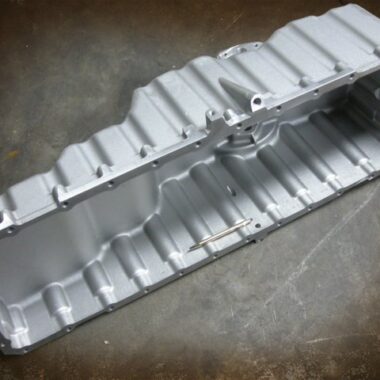The Ultimate Guide to Aluminum Casting: Expert Insights and Best Practices
The Ultimate Guide to Aluminum Casting: Expert Insights and Best Practices
Blog Article
Dive Into the Globe of Light Weight Aluminum Casting: Understanding the Various Techniques
Aluminum casting is a basic process in the production sector, with various techniques used to create complex and precise components. From the standard sand spreading method to the sophisticated die spreading procedure, each method provides special benefits depending on the requirements of the project.
Sand Casting Technique
Sand casting, a widely-used method in aluminum spreading procedures, entails producing molds made of compacted sand for pouring liquified steel. When the mold is ready, it is securely positioned in a flask and molten light weight aluminum is poured into the dental caries.
After the steel has cooled and strengthened, the sand mold and mildew is escaped to reveal the aluminum spreading. Sand casting enables the production of complex forms and big parts that may be hard or costly to generate utilizing other approaches. It is likewise a sustainable strategy as the sand can be recycled and used numerous times, lowering waste in the casting procedure.
Long-term Mold Strategy

One considerable advantage of the Long-term Mold Technique is the improved dimensional precision it supplies. The steel mold and mildew enables for tighter tolerances and finer details in the last light weight aluminum spreadings compared to sand casting methods. This accuracy makes it a recommended option for applications where tight dimensional control is important, such as in the aerospace and automotive industries.

Die Casting Process

Financial Investment Casting Technique
Making use of an accuracy casting approach, Investment Casting Approach entails producing intricate light weight aluminum elements by putting molten metal right into a ceramic mold. This procedure, also recognized as lost-wax casting, starts with the development of a wax pattern of the desired component (aluminum casting).
Financial investment spreading is commonly utilized for making parts in industries where detailed layouts and tight tolerances are called for, such as aerospace, automobile, and medical devices. The convenience and precision of the Investment Casting Method make it a useful strategy in the globe of aluminum casting.
Lost Foam Casting Method
Having checked out the complex accuracy of Financial investment Casting Strategy, the this content emphasis currently changes to the innovative method of Lost Foam Casting in aluminum component manufacturing. Lost Foam Spreading, likewise understood as evaporative pattern spreading, is a contemporary method where a foam pattern of the preferred component is produced and afterwards coated with a refractory material. The coated foam pattern is then hidden in sand, and molten light weight aluminum is put right into the mold and mildew. As the metal fills the mold, the foam evaporates as a result of the warmth, leaving a tidy tooth cavity in the shape of the preferred part.
Additionally, Lost Foam Spreading is an affordable procedure as it decreases the demand for cores and allows for the manufacturing of light-weight components. Regardless of its advantages, Lost Foam Casting calls for careful control of the casting procedure to guarantee and protect against problems high quality parts.
Conclusion
To conclude, light weight aluminum casting provides a selection of methods such as sand casting, long-term mold and mildew strategy, die casting, financial investment spreading, and shed foam casting. Each method has its own benefits and applications, making light weight aluminum casting a functional and widely utilized process in various markets. Comprehending the distinctions in between these approaches is essential in choosing one of the most appropriate spreading strategy for details manufacturing requirements.
Sand casting, a widely-used method in aluminum casting processes, includes producing molds made of compacted sand for pouring molten metal. aluminum casting.The Long-term Mold Method, like sand casting, is one more common technique utilized in aluminum casting processes, offering distinct advantages in terms of mold reusability and dimensional precision. The steel mold and mildew enables for tighter tolerances and better information in the last light weight aluminum spreadings compared to sand casting methods. The two main kinds of die spreading are chilly chamber die casting and hot chamber pass away spreading, each appropriate for different types why not find out more of light weight aluminum alloys.In verdict, light weight aluminum casting uses a range of methods such as sand casting, irreversible mold and mildew method, die spreading, financial investment casting, and lost foam spreading
Report this page